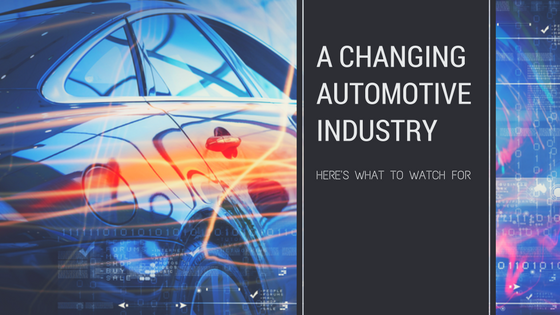If you’ve ever looked at or driven a vehicle from the 90s or before, you know it’s easy to see the changing automotive industry has gone through some major advancements.
This is to be expected – after all, technology has changed many things about the world. It only stands to reason that automobiles, which millions rely on for transportation daily, would see some major upgrades as well.
But it goes beyond flashier bodies or more intricate controls on the dashboard.
The Changing Automotive Industry
Current automotive industry changes are offering drivers more longevity in vehicles, and more responsive driver-assistance technologies. These massive upgrades over the past two decades can also provide some insight into how the future of automobiles might look.
Automobiles Will Become More Durable
The thought of buying a ‘lemon’ has always instilled fear in people. But the chances of this are becoming slimmer – though there are still some duds on the market and this can likely never be stopped completely, vehicles are becoming more reliable.
As technology evolves, manufacturers are using better materials and improved techniques to give consumers a better deal.
Whether they’re buying a sporty car or a rugged truck, nabbing a modern model increases the chances it will hold up over the years. There have also been many breakthroughs in the area of vehicle safety.
Vehicle Safety is Becoming More Automated
Seat belts, air bags, and of course, the horn are all features that drivers can use to avoid or reduce damage in an accident. But the changing automotive industry is now seeing a growing trend of features that assist the driver through smart technology.
This type of technology has been around in some variant for years. For example, backup cameras use sensors and an algorithm that measures distance to give human beings a second pair of eyes when they’re behind the wheel.
Anti-slip traction assist is another example. Designed to detect erratic motion, this feature can be a driver’s best friend when the roads are treacherous and reacting a second too late could mean disaster.
You’ll likely see that things like traction assist, automatic elevation assist, smart brakes, and other high-end features become as common as airbags in the coming years.
But the move toward ‘smart’ cars will not stop with helping the driver – in some cases, they may end up replacing drivers.
How Soon Will You See Autonomous Vehicles on the Road?
Vehicles are becoming safer and more technologically advanced – what is the endgame of these automotive industry changes?
It may be a world where driverless vehicles are as common as human-piloted ones.
Driverless vehicles are already in the prototype stage and have completed successful test drives in the past. Using similar sensors to backup cameras to help self-driving algorithms analyze and react to surroundings, these vehicles may be a regular occurrence on the highway in less than a decade.
For information about vehicles and the products you need to care for them, contact Berryman Products today!

